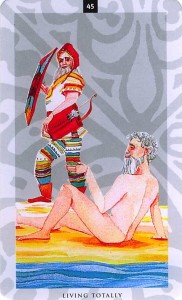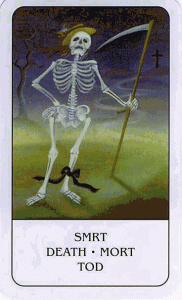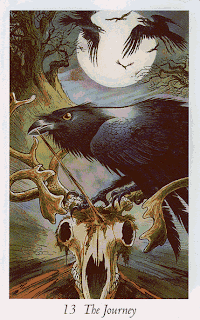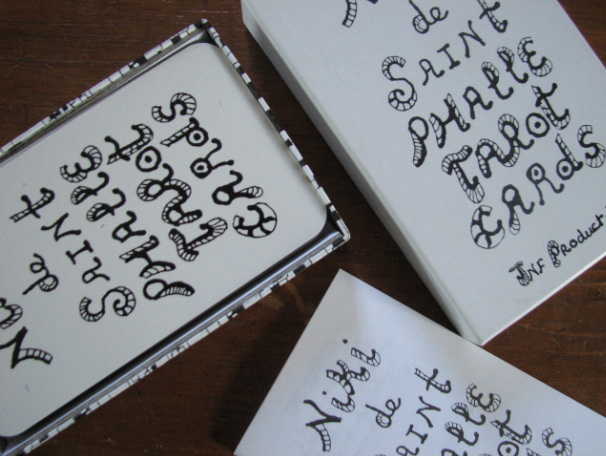
I have recently acquired, via moolah, the Nikki St. Phalle tarot cards. I first encountered this deck ages ago, when it was newly released. At that time I decided that I only wanted 78-card decks, which remains true, for the most part. With this purchase, I feel as if my unintentional collection is complete. At least for now. Now I want to buy a really expensive camera.
* * *

One of the main ways cultures around the globe deal with death is through ritual and religion. In my family, discussion of religion generally progressed something like this:
Setting: Yellow 1977 VW bus, long road trip. External reference to apostles.
Me: “What’s an apostle?”
Mom (to me): “I think the four apostle were named Peter, Paul, Luke and John.” (to my father): “Is that right Paul?” (My mom was born of Jews.)
Dad: (noncommittal grunting sounds indicating probable ignorance.)
Me: “But what did they do?”
(pause)
Mom: “Paul? You went to Catholic school.”
Dad: (emphatic grunting sounds indicating definite ignorance)
Me: “Nobody knows what they did?
Dad: “Exactly. Nobody knows what they did.”
* * *
Eventually, I asked my mother why she brought us up without teaching us about religion. “I taught you about compost,” she replied. “Birth, death and regeneration all right there. Isn’t that religion?”
Eat food. Put scraps in the Temple of Compost. Visit the Temple, turn the pile. Wait. Add scraps. Visit. Turn. Add. Wait. Visit. Turn. (Winter. Spring.) Plant garden. Add compost. Repeat. Is it religion?
I sincerely believe in compost. I have never, in all my wanderings, put my foodstuffs into the trash. My younger sister and I speak in hushed tones about stealth composting systems we have developed for honoring the biodegradable potential of uneaten edibles while living in urban areas where there is seemingly no place where one can decay in peace. Hush, hush. Let it rot.
There is no dogma. There is no incontrovertible truth other than the truth of potential. The only absolute is the absolute potential for Death to bring forth new life. This is what we must honor; this is what we must facilitate.
Denying Death, denying waste, denying that which we see as unwanted or unusable or trash does not make it disappear. Putting trash someplace where we cannot see it does not make it disappear. Turning our heads away from Death does not make Death disappear. Turning our heads from Death causes Death to linger, haunting future generations with illness and waste.
Stockpiling Death does not make death go away. We stockpile Death in wastelands caused by pollution dumped through unseen “necessities” of modern life such as waste disposal, mining, demolition, concentrated animal feed operations, driving and roadbuilding (unseen, yes, because we ignore the waste), hospitalization, and so on. When waste is ignored, Death wins. When the potential energy of “waste” is honored and movement toward this potential is facilitated, we need not fear Death. This is the religion.




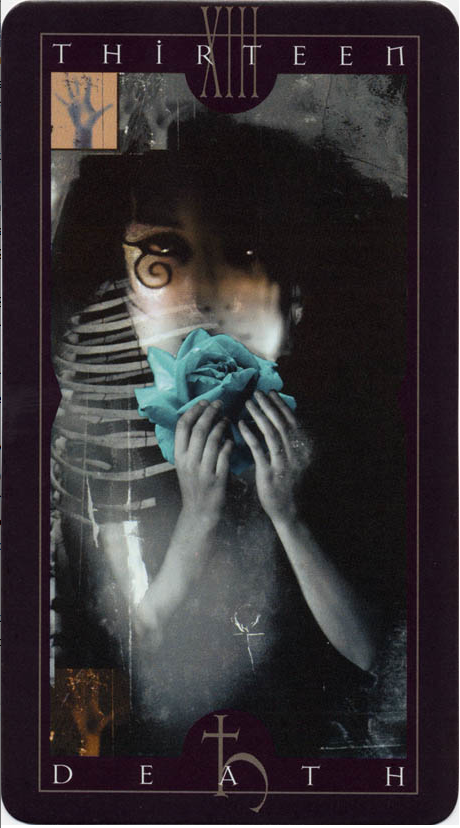
 This was one of the earlier cards I illustrated.
This was one of the earlier cards I illustrated.